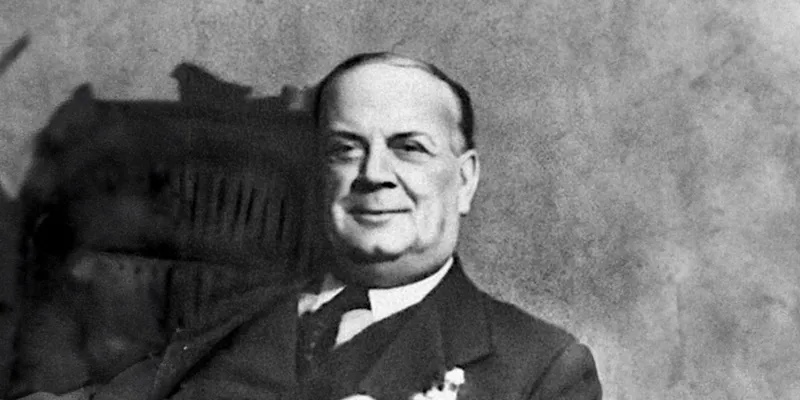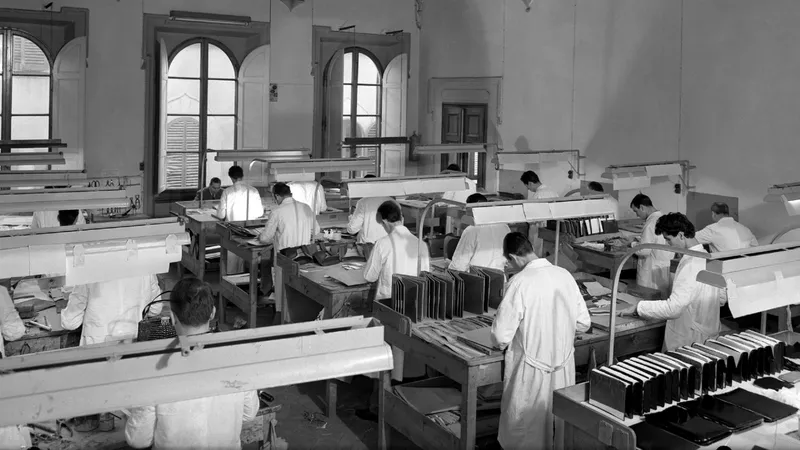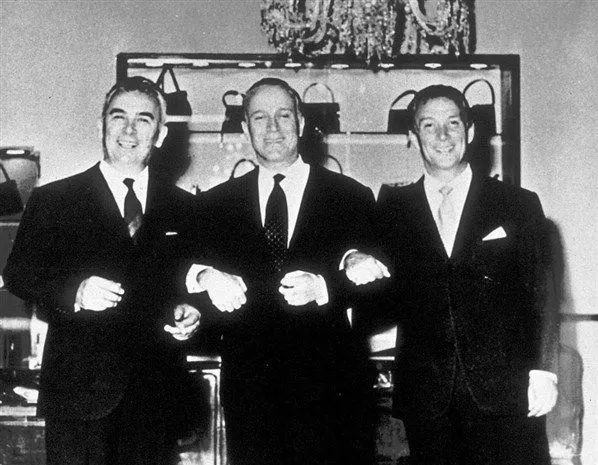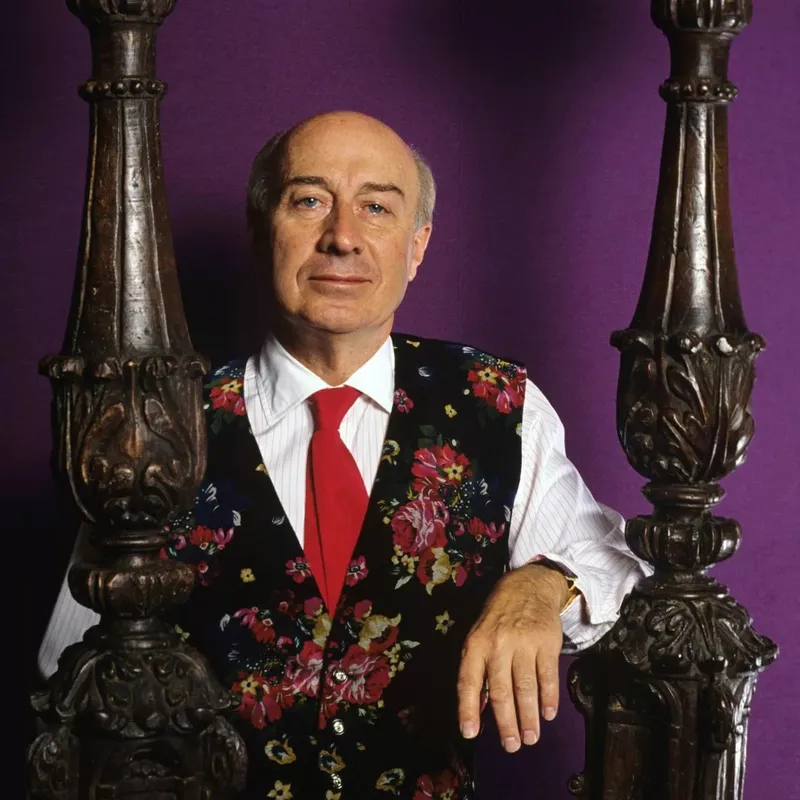Gucci: The Dynasty Built on Drama
Behind Gucci's iconic GG logo lies a shocking saga of ambition, betrayal, and even murder. Dive into the untold story of fashion’s most dramatic dynasty—read now to uncover the secrets they want you to forget!
Gucci, a name synonymous with luxury, innovation, and timeless fashion, hides a history as dramatic as a blockbuster movie (House of Gucci)—complete with betrayal, family feuds, lawsuits, and even murder. What began as a humble leather goods business grew into a global empire, only to witness a series of dark and turbulent chapters. Let's unravel the intriguing, and at times unsettling, tale behind the glamour of the House of Gucci.
The Genesis of Gucci: Humble Beginnings

Guccio Gucci
Guccio Gucci’s story epitomizes the classic rags-to-riches narrative. Born in 1881 in Florence, Italy, Guccio had humble beginnings working in his parents’ straw hat shop. Financial struggles forced the family business into bankruptcy, pushing Guccio to seek opportunities elsewhere.
In 1899, Guccio moved to London and began working as a porter at the prestigious Savoy Hotel. Here, he observed the aristocracy and wealthy travelers flaunting their opulent leather luggage and accessories. For Guccio, these luxury items were more than practical—they were symbols of status and aspiration.
Guccio returned to Florence with a vision: to combine Italian craftsmanship with the sophistication he observed abroad. In 1921, at the age of 40, he opened a small leather goods shop that catered to the elite.

Gucci Workshop in Florence, 1953
Initially importing items, he soon expanded into crafting bespoke handbags, shoes, and belts in his own workshop, responding to the specific tastes of his affluent clientele. Despite early financial struggles and debt, Guccio persevered, securing loans from family members to keep his dream alive.
This marked the birth of Gucci, a brand that would later define Italian luxury.
The Family Expansion and Internal Strife

Aldo, Vasco, Rodolfo
Guccio passed away in 1953, leaving the company to his three sons: Aldo, Vasco, and Rodolfo. Under their leadership, Gucci expanded rapidly, opening stores in Rome, Milan, and, most significantly, New York. Gucci's first American store in 1953 catapulted the brand into the global spotlight, attracting Hollywood stars and cementing its reputation as a luxury symbol.
However, success bred tension. The brothers frequently clashed over the brand's direction. Aldo, known as the "architect of Gucci," played a key role in the company’s global expansion, but his authoritarian style caused friction. Meanwhile, Rodolfo, who owned 50% of the company, resisted Aldo's aggressive growth strategies.

Paolo Gucci
Family tensions escalated when Aldo’s son, Paolo, felt sidelined and launched his own Paolo Gucci brand. The family fought bitterly in court, leading to public scandals that tarnished Gucci's image. Paolo even exposed his father’s tax evasion, resulting in Aldo’s imprisonment at the age of 81.
These internal disputes foreshadowed even greater turmoil to come.
The Darkest Chapter: Maurizio Gucci's Murder
The third generation of the Gucci family marked the most dramatic and controversial phase. Rodolfo’s son, Maurizio, inherited his father’s 50% stake in 1983, becoming the largest shareholder. However, Maurizio’s vision clashed with the rest of the family. He sought to reposition Gucci as an exclusive luxury brand, scaling back licensing deals and reducing mass-market products. While this move restored the brand’s prestige, it also caused massive financial losses—Gucci was bleeding $30 million annually by the early 1990s.
Maurizio’s personal life mirrored his professional chaos. His marriage to Patrizia Reggiani, a socialite known for her extravagance, ended in a bitter divorce. Patrizia resented losing her connection to the Gucci empire and, fueled by jealousy and financial concerns, staged Maurizio’s assassination in 1995. Shot in broad daylight, Maurizio’s death shocked the world. Patrizia was later convicted of hiring the hitman and served 18 years in prison.
This scandal not only marked the end of the Gucci family's direct involvement in the business but also left an indelible stain on the brand's legacy.
Resurgence and Reinvention: The Tom Ford Era
By the mid-1990s, Gucci was in dire straits, facing bankruptcy due to mismanagement and internal conflicts. Enter Tom Ford, the American designer who revolutionised the brand. Hired as Creative Director in 1994, Ford brought a bold, sensual aesthetic that appealed to a younger, fashion-forward audience. His designs, coupled with strategic marketing, revitalised Gucci’s image.
Under Ford’s leadership, sales soared from $263 million in 1995 to $500 million in 1996. This period, often called the "Tom-Dom Bomb" era (a nod to Ford and then-CEO Domenico De Sole), is credited with turning Gucci into a modern powerhouse. Ford’s decision to reintroduce the iconic "GG" logo and focus on high-end exclusivity cemented the brand's reputation as a luxury leader.
During this resurgence, Gucci went public, raising substantial capital through a successful IPO. However, a stock market crash in Japan allowed luxury conglomerate LVMH to begin acquiring Gucci shares. In a twist of fate, Gucci fended off the takeover by aligning with rival firm Kering (then known as Pinault-Printemps-Redoute), marking the beginning of its current era as a global luxury conglomerate.
The Legacy of Gucci Today

Alessandro Michele
Today, Gucci stands as a symbol of resilience and reinvention. Under the creative direction of Alessandro Michele (2015–2023), the brand embraced bold, eclectic designs that resonated with a younger, digital-savvy audience. Social media campaigns, collaborations, and sustainability initiatives have further strengthened Gucci’s relevance in a competitive market.
With over 500 stores worldwide and an estimated brand value of $22.6 billion, Gucci continues to balance accessibility with exclusivity, offering everything from high-fashion runway pieces to signature accessories like belts and bags. The success of the 2021 film House of Gucci—despite criticism from the Gucci family—only added to the brand’s mystique, introducing its dramatic history to a new generation.
The Tale Gucci Would Rather Forget
The Gucci story is a compelling blend of ambition, artistry, and controversy. From its humble beginnings in Florence to its global dominance, the brand’s journey has been anything but ordinary. Yet, for all its success, Gucci’s legacy is marred by betrayal, legal battles, and murder—events that the brand might wish the world would overlook.
As Gucci continues to evolve, its story serves as a reminder of the complexities behind the glamour. After all, every masterpiece comes with its shadows, and Gucci's is a tale of triumph—and tragedy—that will never be forgotten.
Edited by Rahul Bansal







